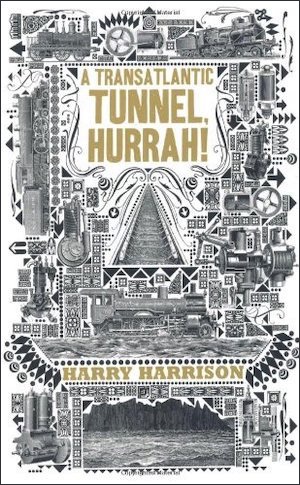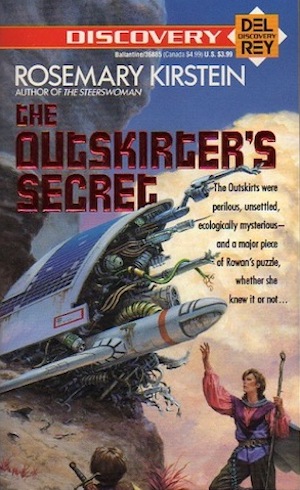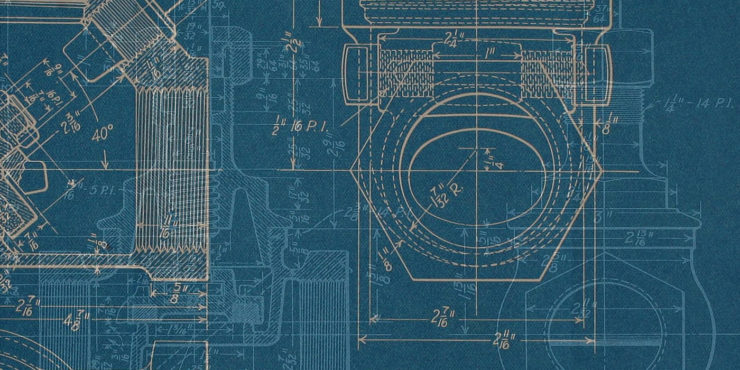Sure, there’s a lot of entertainment value in grand set piece battles, personal duels, or even two wizards engaging in a magical combat to the death. But there are those of us who enjoy a more arcane pleasure: edge of the seat thrills as protagonists struggle to build vast infrastructure projects. I would argue that providing London with a functional sewer system was more exciting than defeating the French at Trafalgar. Why read Riders of the Purple Sage when the same author wrote what is, to my mind at least, a much more engaging book: Boulder Dam, a thrilling historical account of the building of the dam!
A few other SFF authors have embraced the romance of large-scale engineering projects. Here are five inspirational examples.
A Transatlantic Tunnel, Hurrah! by Harry Harrison (1972)

The traitor George Washington is almost two centuries dead. The once rebellious colonies are now content within the British Empire. The Atlantic still divides the imperial children from their doting British mother. It falls to Washington’s descendant Captain Augustine Washington, to tether Britain to America with nothing less than a transatlantic tunnel! Hurrah!
Many might (and many have) expected Augustine to be a bad seed, carrying as he does within his veins the blood of one of history’s greatest villains. Nevertheless, Augustine is a dutiful subject and a superlative engineer. He is highly motivated. Not just by patriotism, but by passion of a more personal variety. Completing the tunnel will not merely unify an empire; it may win him the hand of the woman he loves.
***
The Complete Venus Equilateral by George O. Smith (1976)

Located sixty degrees ahead of Venus, the Venus Equilateral Relay Station and the three thousand people working within the converted asteroid are a critical element in interplanetary communications. Without Venus Equilateral, contact between Earth and Venus would be disrupted whenever orbital dynamics placed the Sun too close to line of sight between the worlds. With Venus Equilateral, messages can flow back and forth without interruption. The station’s services are indispensable.
One might expect therefore that Venus Equilateral would be sacrosanct, spared the machinations of the ambitious. Not so! The hard-working engineers and the women to whom they explain things at great length are forever defending Venus Equilateral from officious bureaucrats, would-be space pirates, and not least, the hard-working engineers themselves, none of whom ever pause for consideration before unleashing their latest paradigm-breaking inventions on a poorly prepared world.
***
The Outskirter’s Secret by Rosemary Kirstein (1992)

At first glance, Steerswoman Rowan lives in a fantasy world, one in which the common folk depend on lore gathered and disseminated by a guild of Steerswomen. They are also subject to the whims of powerful, aloof wizards. Wizards and Steerswomen do not mix.
Readers eventually learn that this is no fantasy world. The Steerswomen are busy creating pure science from scratch. The wizards in contrast might be called “engineers,” shaping their world with applied sciences whose basis they do not completely understand and which they will not share with others.
Although Rowan is not aware of the fact, her world is the stage for a centuries-long project, an epic struggle to reshape a world. A few hints have fallen into Rowan’s hands, enough to lure her out into the Outskirts where human-compatible organisms rub shoulders with biochemically incompatible plants and animals. The quest should be straightforward. After all, how dangerous could the innocuously named “Routine Bioform Clearance” be?
***
The Collapsium by Wil McCarthy (2002)

The Ring Collapsiter exploits certain useful properties of hyperdense matter to provide humanity with superluminal, high-bandwidth communication across the inner Solar System. There is but one small flaw in the system, the very one that compels Her Majesty Tamra-Tamatra Lutui, the Virgin Queen of All Things, to visit a scientist’s isolated Kuiper Belt retreat.
As long as the Ring Collapsiter functions properly, all is well. Should something – a natural mishap like a flare, perhaps, or deliberate sabotage – disrupt the systems holding the ring in place above the Sun, all is somewhat less well. If the hyperdense collapsium in the ring fell into the Sun, the side-effects could well exterminate life across the Solar System. This would be bad. Accident and malice are inevitable. It falls to scientist Bruno to prevent doomsday.
***
The Man Who Bridged the Mist by Kij Johnson (2011)

Bridging the wide river that divides the Empire’s Nearside from Farside would be challenge enough were it to span a conventional river. In this case, the river is concealed within a caustic mist. If that were not enough, creatures, some quite massive, lurk within the mists. Each trip across the river is a calculated risk.
Kit Meinem of Atyar has been tasked to build a bridge over the river. The project will take years, long enough for Kit to get to know and become fond of the people on either side of the river. It was one thing to plan the bridge without knowing those it would affect; it’s quite another when you know the people who will lose their livelihood. Especially when some of those people are friends and lovers.
***
No doubt you have your own favourites, many of which you feel are vastly superior to the ones I selected. Comments are below.










